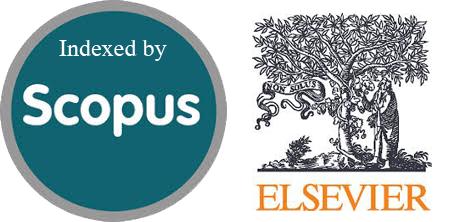Exploring the Relationship Between Urolithiasis and Hypertension: A Cross-Sectional Study
DOI:
https://doi.org/10.54133/ajms.v9i1.2042Keywords:
Body Mass Index, Hypertension, Renal stones, Risk factors, UrolithiasisAbstract
Background: Urolithiasis and hypertension are prevalent and clinically significant conditions in the Middle East, both influenced by shared metabolic and environmental risk factors. Understanding the potential association between them is important for guiding prevention strategies. Objective: To explore the relationship between urolithiasis and hypertension in a sample of Iraqi adult patients. Methods: A cross-sectional observational study was conducted at Alkindy Teaching Hospital, Baghdad, from September 2024 to March 2025. Participants included 237 patients with confirmed urinary tract stones and 244 controls confirmed to be stone-free, matched for age and sex. Exclusion criteria included secondary hypertension, chronic kidney disease (stage 3 or higher), pregnancy, and metabolic or hormonal disorders likely to alter the blood pressure. Blood pressure status was determined via history and repeated measurements. BMI and demographic data were collected. Statistical analysis included Chi-square, Mann-Whitney U, and logistic regression models. Results: Hypertension was significantly more prevalent in the urolithiasis groupan in the controls. Patients with urolithiasis also had significantly higher BMI. However, after adjusting for age and BMI, urolithiasis was no longer significantly associated with hypertension (OR = 0.63; 95% CI: 0.39–1.01; p=0.056), while both age and BMI remained significant predictors of hypertension (p<0.001). Conclusions: Although a higher prevalence of hypertension was observed among patients with urolithiasis, this association was not statistically significant after adjusting for age and BMI. These findings suggest that shared risk factors, particularly obesity, may mediate the observed relationship.
Downloads
References
Tahir NL, Hassan QA, Kamber HM: The prevalence of a clinically silent nephrolithiasis in Baghdad population: An initial ultrasound screening study from Iraq. Acta Medica Iranica. 2019;13:51-56. doi: 10.18502/acta.v57i1.1753. DOI: https://doi.org/10.18502/acta.v57i1.1753
El-Faqih SR. (2012). Epidemiology of stone disease in Saudi Arabia with an overview of the regional differences. In: Talati J, Tiselius, HG, Albala D, YE Z, (Eds), Urolithiasis. Springer, London. 2012. doi: 10.1007/978-1-4471-4387-1_10. DOI: https://doi.org/10.1007/978-1-4471-4387-1_10
Kamal WK, Alghamdi MM, Azhar RA, Bugis A, Abuzenada M, Alharthi M, et al. The impact of urolithiasis on urology services in a high-prevalence region: A multicenter study. Asian J Urol. 20251;12:59-65. doiI: 10.1016/j.ajur.2024.04.001. DOI: https://doi.org/10.1016/j.ajur.2024.04.001
Yasui T, Okada A, Hamamoto S, Ando R, Taguchi K, Tozawa K, et al. Pathophysiology‐based treatment of urolithiasis. Int J Urolo. 2017, 24:32-38. doi: 10.1111/iju.13187. DOI: https://doi.org/10.1111/iju.13187
Okati-Aliabad H, Ansari-Moghaddam A, Kargar S, Mohammadi M. Prevalence of hypertension and pre-hypertension in the Middle East region: a systematic review & meta-analysis. J Human Hyperten. 2022;36:794-804. doi: 10.1038/s41371-021-00647-9. DOI: https://doi.org/10.1038/s41371-021-00647-9
Williams, Bryan, and others, (Eds.), Epidemiology and pathophysiology of hypertension, The ESC Textbook of Cardiovascular Medicine, (3 Edn.), The European Society of Cardiology Series (Oxford, 2018; online edition, ESC Publications, 23 Apr. 2020). doi: 10.1093/med/9780198784906.003.0563_update_001. Accessed 12 May 2025. DOI: https://doi.org/10.1093/med/9780198784906.003.0563_update_001
Taylor EN, Stampfer MJ, Curhan GC. Obesity, weight gain, and the risk of kidney stones. JAMA. 2005;26:455-462. doi: 10.1001/jama.293.4.455. DOI: https://doi.org/10.1001/jama.293.4.455
Carbone A, Al Salhi Y, Tasca A, Palleschi G, Fuschi A, De Nunzio C, et al. Obesity and kidney stone disease: a systematic review. Minerva Urol Nefrol. 2018;70:393-400. doi: 10.23736/S0393-2249.18.03113-2. DOI: https://doi.org/10.23736/S0393-2249.18.03113-2
Kittanamongkolchai W, Mara KC, Mehta RA, Vaughan LE, Denic A, Knoedler JJ, et al. Risk of hypertension among first-time symptomatic kidney stone formers. Clin J Am Soc Nephrol. 2017;12(3):476-482. doi: 10.2215/CJN.06600616. DOI: https://doi.org/10.2215/CJN.06600616
El Meouchy P, Wahoud M, Allam S, Chedid R, Karam W, Karam S. Hypertension related to obesity: pathogenesis, characteristics and factors for control. Int J Mol Sci. 2022;14:12305. doi: 10.3390/ijms232012305. DOI: https://doi.org/10.3390/ijms232012305
Hall JE, do Carmo JM, da Silva AA, Wang Z, Hall ME Obesity, kidney dysfunction and hypertension: mechanistic links. Nat Rev Nephrol. 2019;15:367-385. doi: 10.1038/s41581-019-0145-4. DOI: https://doi.org/10.1038/s41581-019-0145-4

Downloads
Published
How to Cite
Issue
Section
License
Copyright (c) 2025 Al-Rafidain Journal of Medical Sciences ( ISSN 2789-3219 )

This work is licensed under a Creative Commons Attribution-NonCommercial-ShareAlike 4.0 International License.
Published by Al-Rafidain University College. This is an open access journal issued under the CC BY-NC-SA 4.0 license (https://creativecommons.org/licenses/by-nc-sa/4.0/).











